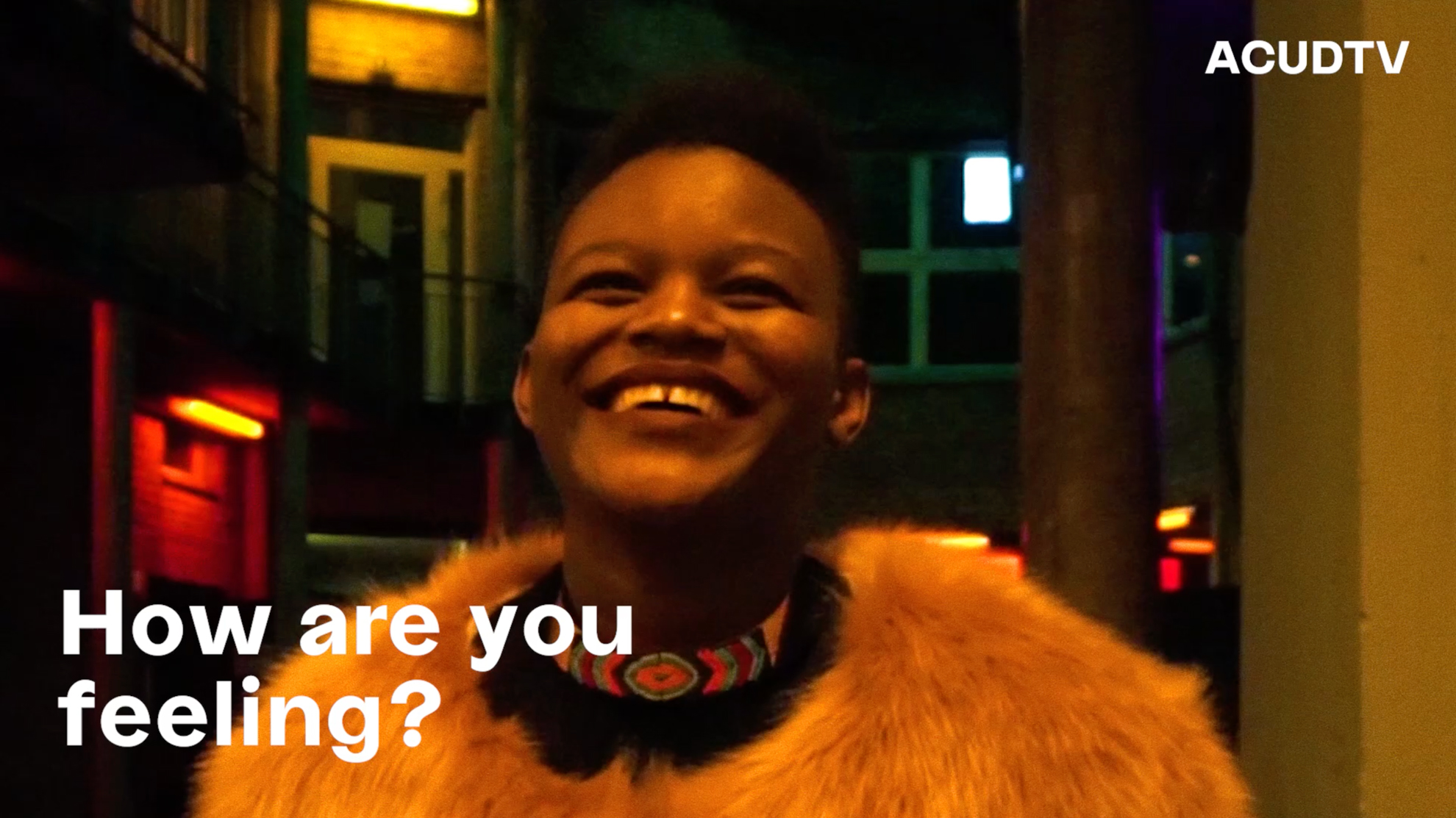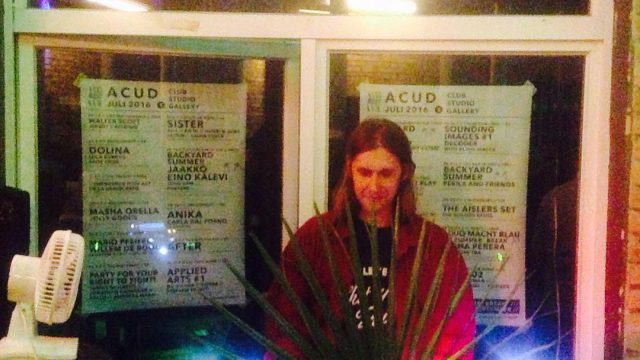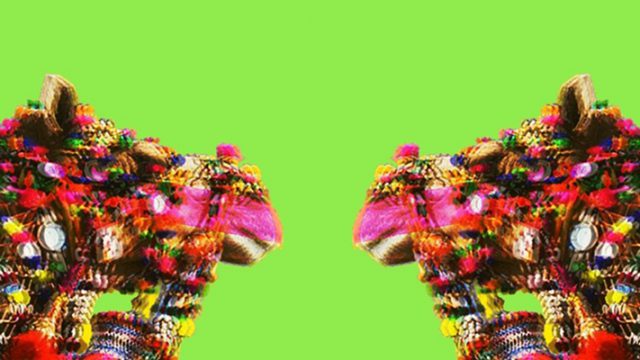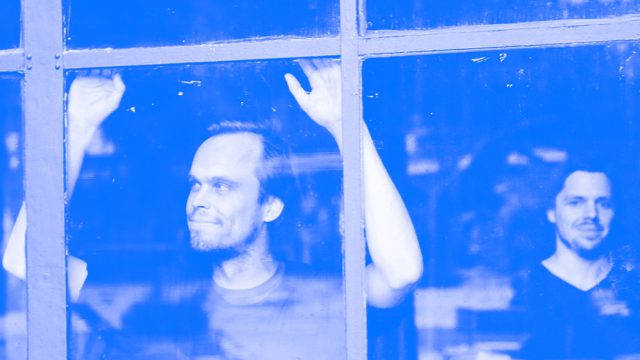Using their immediate environment as a point of departure for their feature length films, the artists Henning Fehr and Philipp Rühr have investigated various social systems and their inherent contradictions. In the background of their work, there is a persistent question about how smaller communities can shape or even transform a society at large. In their most recent trilogy “Polyrhythm Technoir”, which focuses on the socio-political landscape of the techno scene and its conditions of production, the entanglement of art and commerce is ubiquitous. Yet there is also another thread connecting the works: The films don’t tell stories in any traditional sense. Rather they opt for atmospheres and situations instead of events, long takes instead of quick edits, and silences and soundscapes instead of dialogue.
The exhibition at ACUD gallery is the most comprehensive presentation of Fehr and Rühr’s artistic practice to date. Besides the trilogy “Polyrhythm Technoir”, one of their very first films “My Language is an Unpaved Road (Crystal Bridges)” will be shown as well. Two more works created in recent years supplement the selection. The opening takes place this Friday. For our blog, Philipp answered a few questions dealing with the exhibition and their practice.
Philipp, what exactly are Henning and you exhibiting at ACUD?
Philipp Rühr: We are showing four films in the exhibition. They are all independent of each other, but we tried to arrange them in a way that allows for a sort of polyrhythmic reading. We have never done something like this before but Elodie Evers really helped us to figure out a way that seems appropriate.
Your use of very long shots is a reference to so called Slow Cinema. What do you like about this kind of genre?
About a year ago we came across Nadin Mai’s blog on slow cinema. As we share her excitement for film makers like Lav Diaz or Liu Jiayin, we looked into her definition of the term, which is very precise and related to third cinema, a radical cinema that came into being during the South American independence movements in the sixties. But long before we heard about the discourse on slow cinema we were using long shots. It is important to us to see other film makers who work on some of the same problems, but there are, of course, also big differences. I think our initial motivation to use long shots was to open up a temporal space in which a precise reading of specific images would be possible. This, in my mind, is really a post-conceptual strategy. Slow cinema and other fields and discourses have then had a big influence on taking this post-conceptual methodology and transforming it into something that is very much about experiences. I’m really interested in the tension between these two diametrically opposed points: immediate experience and post-conceptual reading. Aesthetically this is the crux of the matter. Two students of Christopher Williams going to a techno party.
A recurring subject of your work are micro communities. In your exhibition trilogy „Polyrhythm Technoir“ you examined different Techno scenes, for Vice Magazine you wrote a piece about the Salafist scene. What do you find so fascinating about these community formations and in how far is this subject also reflected in your exhibition?
Micro communities, scenes, worlds, inclusivity, exclusivity, hierarchies, DIY, grass roots organizing, institutions, art imperialism, clubs, festivals, substances, dealing, mainstreaming, underground, radicalism, extremism, overground, hovering, minorities, democracy, anarchy, mob rule, rituals, boredom, post-, depression, healing, therapy, accelerationism, slow cinema, queer theory, sonic history, and so on. Mostly Trauerarbeit.
What was your first response when visiting ACUD?
ACUD is a community run space and you can still sense some of the spirit of the nineties. For me it is going to be interesting to see how the gallery’s new program is going to affect the overall situation of ACUD and vice versa. I hope the show will contribute something to the whole place. One of the films in the exhibition shows techno-scenes in Mexico and Montreal – it was our original idea to show a film about this scene to the art scene. But in the end it became at least as important to show this film to the people involved with techno, and we had a few screening situations where these different scenes – the art scene and the techno scene – actually came together. In my mind the ACUD could be an ideal place for situations like this.
When and how did you start working together? What do you like about it?
We started working together during the time of our studies. We are really close friends and have been engaged in a nine year long conversation that constantly changes and develops. The question why we collaborate doesn’t really occur to us so much. So many musicians and people involved in music and theatre collaborate, why should it be different for artists? One of the best things about our collaboration is our shared Facebook account. I really recommend trying that!
Your trilogy “Polyrhythm Technoir” is about the German techno scene. Are you gonna go clubbing while in Berlin?
Later in the month we are going to show our film An Endless Cigarette at the ACUD cinema. It was shot in 15 different clubs in Berlin. I really like it when the cinema turns into a club-like situation, but I don’t like it so much when the club turns into a cinema like situation, which is why we avoid most clubs in Berlin. Although….






